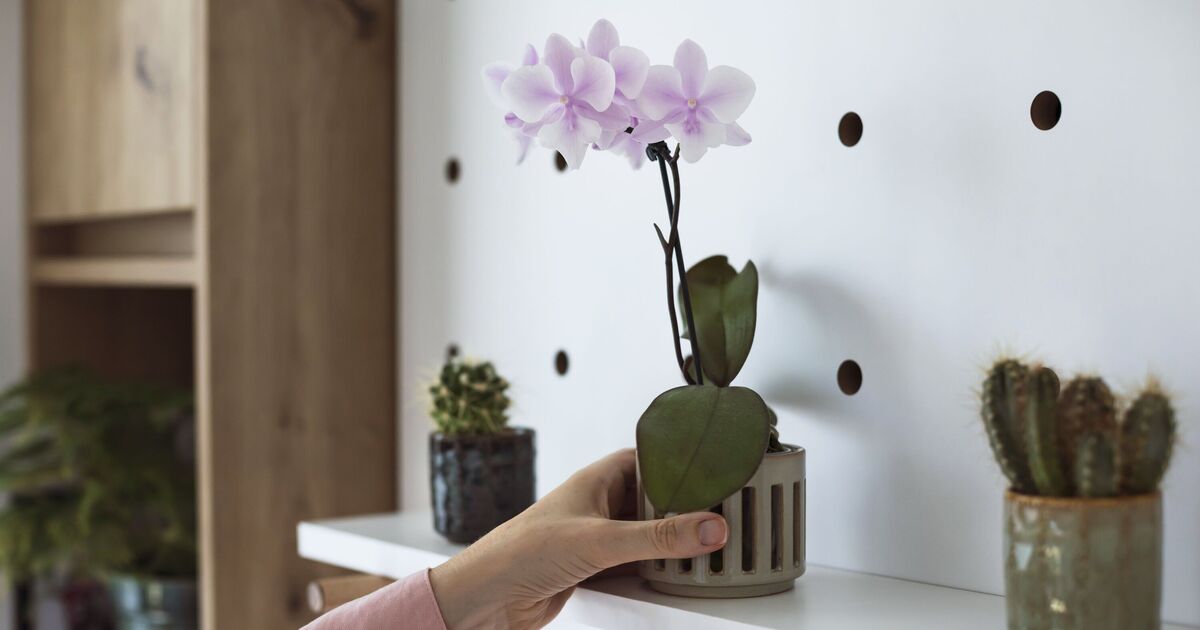You could be accidentally destroying the roots of your orchid if you make this common watering mistake. Orchids are notoriously tricky plants to care for, as they require different care than most common houseplants. The flowers are tropical plants with unique root systems that require different soil and watering routines than other plants you might have in your home or garden.
One of the most common things you might be told when it comes to watering an orchid is that you should use ice cubes. This is because the claim is that the ice will melt and slowly give your orchid the water it needs over time.
However, one gardening expert has urged people to stop doing this, as it could be damaging their orchid, and there’s no real need to do it when watering them regularly works just fine.
Paige Tailyn explained in a TikTok video that orchids can be easy to care for if you follow the right steps, ensuring you stimulate growth, water them properly, and feed them at the right time.
She said: “Maturing is realising that you should not be watering your orchids with ice cubes. When you get your new orchids, go ahead and throw away that care card. It’s going to tell you to water it with ice, and it’s going to p**s me off.”
The woman continued by stating orchids are holoepiphytic, which means they spend their life in the wild growing on other plants without establishing a connection to the ground. They derive their moisture and nutrients from the air, rain, and organic debris that collects around their roots.
This means that houseplants should not be planted in the same soil as other houseplants. When your orchid’s initial run of flowers dies off, you should restimulate flowering by trimming the stem back to just before the first bloom, and then replant it in special soil known as orchid bark.
Warning: The below video contains strong language.
Orchid bark simulates a tree, which is where orchids would typically grow in the wild. Carefully remove your orchid from the container it came in, and gently brush the excess moss and soil away from the roots.
If your plant has brown roots, trim them off to leave just the bright green roots behind. Place some orchid bark in a flowerpot and your orchid inside, topping off with more bark to fill the space around the plant.
Showing off a freshly watered orchid, Paige said the colour of the roots can help your determine whether your plant needs some hydration. She said: “You can see the roots are a vibrant green. That’s perfect, that means she got a nice little something to drink. You’ll know when you need to water your orchid when the roots turn silver.”
Paige also said that when it comes to feeding, you should never feed your orchid when it’s actively flowering. You should only feed with fertiliser once the flowers have fallen off.
How to care for an orchid
1. Light:
- Orchids prefer bright, indirect sunlight.
- Avoid direct sun, which can scorch leaves.
- East or west-facing windows are ideal.
2. Watering:
- Water once a week, allowing the potting mix to dry slightly between waterings.
- Use room-temperature water and avoid letting the plant sit in water.
- Water in the morning so leaves dry by evening.
3. Temperature:
- Most orchids thrive in temperatures between 65–75°F (18–24°C) during the day and slightly cooler at night.
4. Potting Mix and Repotting:
- Use a well-draining orchid mix (bark, sphagnum moss, or perlite).
- Repot every 1–2 years, or when the potting mix breaks down.
5. Fertilising:
- Use a balanced, water-soluble orchid fertiliser (20-20-20) every 2–4 weeks during active growth.
- Dilute to half strength for best results.
6. Air Circulation:
- Good airflow helps prevent disease.
- Avoid placing orchids in stuffy or stagnant areas.
7. Pruning:
- After blooms fall, cut the flower spike just above a node to encourage new blooms, or cut it off at the base if it turns brown.

